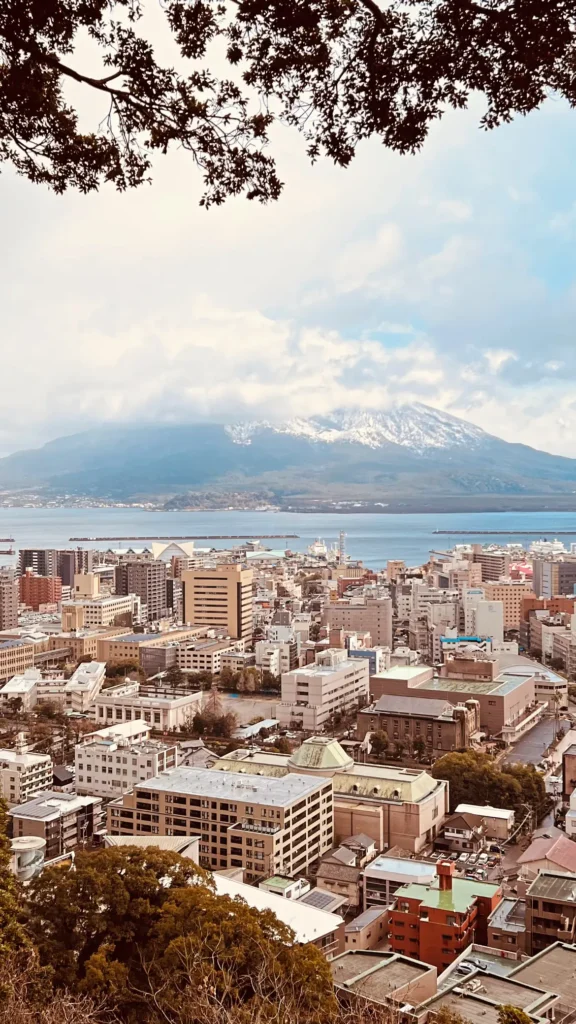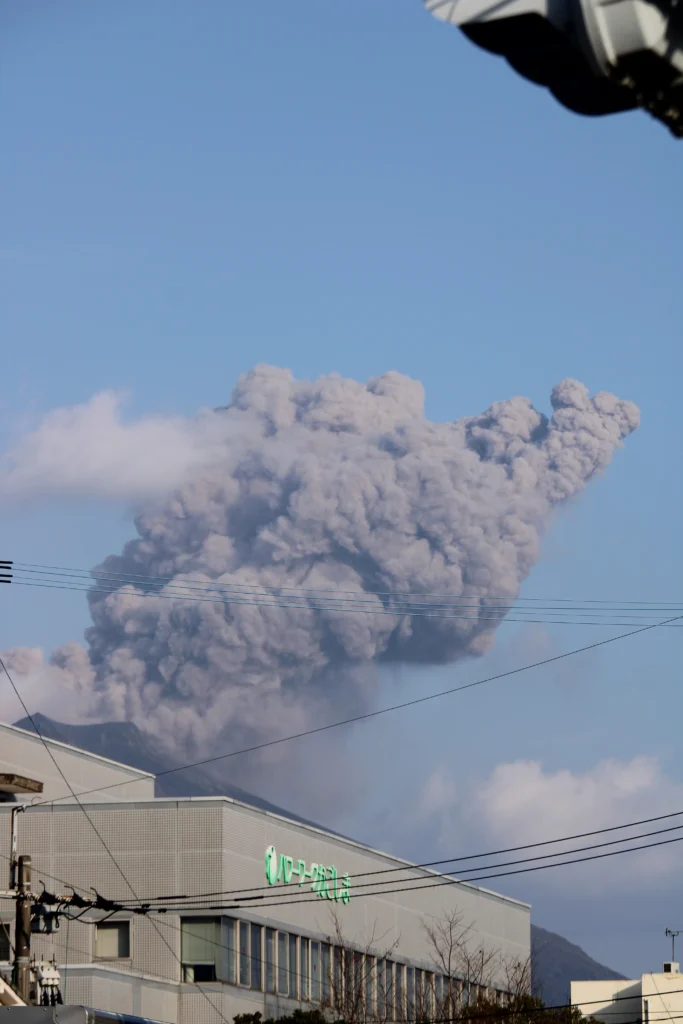It is well known that the Japanese are used to living with numerous natural hazards due to the country’s location within the Pacific Ring of Fire, a region of intense geodynamic activity where the majority of the world’s volcanoes are concentrated. Japan has more than 300 identified volcanoes, around a hundred of which are considered active, and half of those are under constant monitoring by the Japan Meteorological Agency (JMA). Among the most famous are the iconic Mount Fuji, the vast caldera of Mount Aso, and the urban Sakurajima, a symbol of the city of Kagoshima.

Sakurajima (桜島), which literally means “cherry blossom island,” joined the mainland after a major eruption in 1914 that filled the strait with lava. Since then, its activity has been continuous, with frequent ash emissions, small explosions, and visible fumaroles almost every day. Despite its latent threat, the citizens of Kagoshima live with it with a mix of respect and pride. At its base is the small village of Sakurajima-chō, with 4,000 inhabitants, a community where people live with strict safety measures and constantly receive alerts and drills.
Just 4 km away is Kagoshima, a city of nearly 600,000 inhabitants that is not directly affected by the volcano’s risk, as it lies across the bay. However, it does receive ash rain when eruptions occur on windy days. Its residents are accustomed to regularly sweeping the streets, and it is very common to find signs indicating how the urban cleaning procedures work. Nonetheless, the concentration is usually low and does not pose a direct risk to the population.

You can easily visit Sakurajima from Kagoshima by ferry (about a 15-minute journey) or by car, driving around the bay. Once you arrive at the volcano area, it’s recommended to take the Sakurajima Island View Bus, a sightseeing bus that follows a circular route around the main points of interest, though it’s also possible to explore the area by car. The place is very safe, and in case of eruptions or ash clouds, you will be warned in advance about how far you can go.
Among the highlights is the Yunohira Observatory (湯之平展望所), located at 373 meters, which offers the closest view of the crater. Not far from there, you can visit the Kurokami Torii (黒神埋没鳥居), a shrine partially buried by the 1914 eruption. Along the coastline, you’ll also find a foot bath with hot spring waters to relax your feet while enjoying the view of the sea. If you prefer a more active experience, you can hike the Nagisa Lava Trail (溶岩なぎさ遊歩道) or the Arimura Lava Observatory (有村溶岩展望所), which pass through ancient fields of solidified lava, offering spectacular views of both the volcano and Kagoshima Bay.
Known as the Naples of the East for its mild climate and the proximity of the volcano, Kagoshima city has much to offer visitors. Despite being a medium-sized city and the capital of the prefecture, walking through its streets is very pleasant, and it is not particularly touristy, allowing for a peaceful atmosphere. We recommend visiting the Meiji Restoration Museum and Sengan-en (仙巌園), the former residence of the Shimazu lords, rulers of the Satsuma Domain, one of the most powerful clans during the Edo period between the 17th and 19th centuries. Throughout the city, you’ll see references to famous samurai from this era, as the city played a key role in Japan’s transition from feudalism to the modern state in the 19th century.






Do you want to travel to Kagoshima and discover the impressive Sakurajima volcano? Contact us, and we will design the perfect experience for an unforgettable trip.